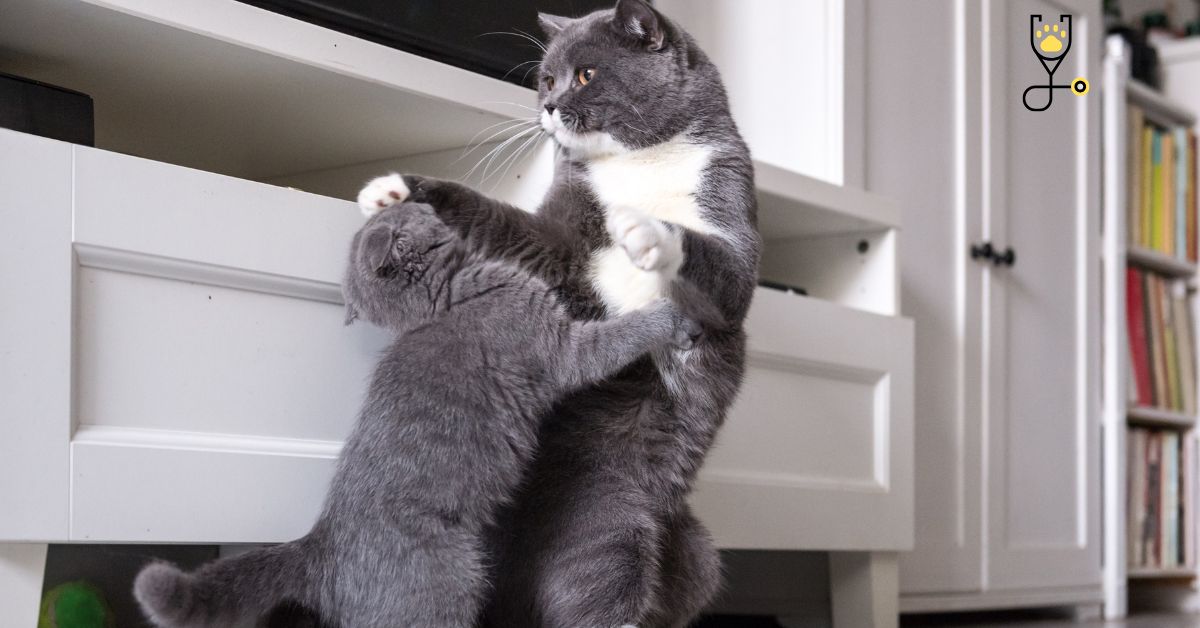Every cat owner knows the pain of having a feline friend who’s not too keen on new additions – even when those additions are cute, little kittens. If you’re struggling to introduce a new kitten into your home because your cat keeps rejecting it, don’t worry – we’ve got 10 tips to help get things back on track! Read on to learn more.
1. Give Them Time to Adjust
The first and most important thing to remember is that cats are creatures of habit. They like routine and they don’t adapt well to change. So, when you bring a new kitten into the home, your cat is going to need some time to adjust.
This doesn’t mean that you should just leave them to it, though. You’ll need to be patient and give them plenty of time and space to get used to their new surroundings – but eventually, they’ll come around!
2. Let Them sniff Each Other Out
Cats communicate through scent, so it’s important to let them take the lead when introducing a new kitten. Start by letting them smell each other from a distance, then gradually move them closer together until they’re comfortable being in the same space.

3. Give Them Their Own Space
One of the reasons cats may reject a new kitten is because they feel like their territory is being invaded. To help them feel more at ease, make sure each cat has their own food and water bowls, beds, litter boxes, and toys.
4. Be Careful with Feeding Time
Feeding time can be a stressful experience for cats, so it’s important to be careful when introducing a new kitten. If possible, feed them in separate rooms or on opposite sides of the room to avoid any territorial disputes.
5. Play Time is Important
Cats love to play, so take advantage of this by playing with each cat separately. Routine is important to cats, so try to stick to the same playtime schedule for each cat. This will help them feel comfortable and secure in their environment.

6. Use a Calming Spray
If your cat is feeling stressed, try using a calming spray or diffuser. Cats are very sensitive to smells, so a calming scent can help them relax and feel more at ease. Sprays are very easy to use and can be found at most pet stores.
7. Give Them Some Alone Time
Sometimes, the best thing you can do for your cats is to give them some time apart. If they’re constantly fighting or hissing at each other, it’s likely they just need some space. Let them have some time apart during the day, and only put them together when you’re around to supervise.
8. Try a Pheromone Collar
Pheromone collars are a great way to help reduce stress in cats. These collars emit a calming scent that can help to ease tension and anxiety. These coals are very easy to use and can be found at most pet stores.
Learn More: 10 Reasons Why Cats Love Bathrooms
9. Seek Help from a Vet
If you’ve tried all of the above and your cat is still rejecting the new kitten, it’s time to seek help from a professional. Your vet will be able to offer advice and recommend products that can help to make the transition easier for both cats.

10. Be Patient
Finally, it’s important to remember that Rome wasn’t built in a day. It may take some time for your cats to adjust to each other, but eventually, they’ll be best friends! Just be patient and keep up with the above tips, and you’ll see results in no time.
Conclusion
Introducing a new kitten into your home can be a challenge, but with patience and perseverance, you’ll eventually get there! If you’re struggling, don’t hesitate to seek help from a professional. The above tips will help you to get your cats adjusted to each other in no time.
Frequently asked questions
It can take anywhere from a few days to a few weeks for a cat to adjust to a new kitten. It’s important to be patient and give them plenty of time and space to get used to their new surroundings.
The best way to introduce a new kitten to an older cat is by letting them sniff each other out from a distance, then gradually moving them closer together until they’re comfortable being in the same space. You should also make sure each cat has their own food and water bowls, beds, litter boxes, and toys.
There are a number of reasons why your cat might be rejecting the new kitten. They may feel like their territory is being invaded, or they may be stressed and anxious. Sometimes, the best thing you can do is to give them some time apart. Let them have some time apart during the day, and only put them together when you’re around to supervise.
There are a few things you can do to help your cat adjust to a new kitten. Try using a calming spray or diffuser, playing with each cat separately, and giving them their own space. If you’re struggling, seek help from a professional.
If your cat is still rejecting the new kitten, it’s time to seek help from a professional. Your vet will be able to offer advice and recommend products that can help to make the transition easier for both cats. Just be patient and keep up with the above tips, and you’ll see results in no time.
Yes, with time and patience, your cats will eventually become friends. Just be sure to give them plenty of time and space to adjust to each other. eventually, they’ll be best friends!







